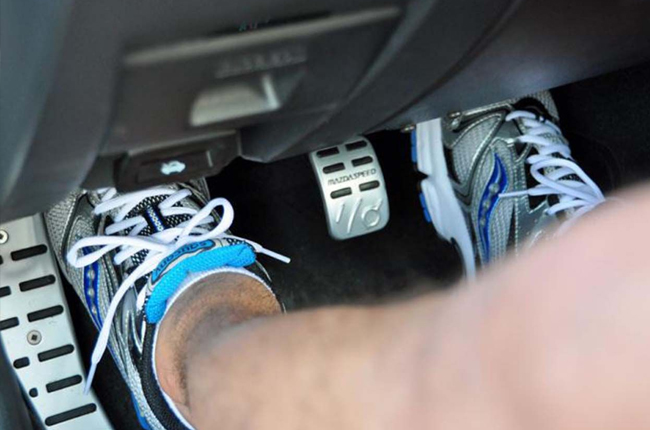
Jump-starting your car isn’t an easy feat. If not done correctly, it could lead to destroying your car’s gearbox which will cost you a lot. Since you don't know when your car will suddenly not start, it’s better to be prepared when that time comes. Aside from having your jumper cables, you’ll also need to know the right procedure in jump-starting your vehicle. This could happen anytime and unexpectedly, and your car could eventually die at some point if it’s been on the road for years.
Take note, though, that this process will only work for vehicles equipped with a manual transmission. If you attempt to jump-start an automatic, it could result in completely destroying the transmission system as it’ll be hard to match the speed with its gear just by pushing. So without further ado, here’s how you can jump-start your car.
Clear the area

Make sure that the coast is clear. Your car would need 50 to 100 meters of runway for the jump-start to be successful. The area should be safe from unsuspecting obstacles or people. Plus, jump-starting on a downhill slope is easier but not recommended as you might lose control of the vehicle.
Get into position

Get in your normal driving position. Turn your keys on, push on the clutch pedal, and engage in 2nd gear. Features that use electricity such as air conditioning, radio, and lights should be turned off as you will need all the power from your batteries.
Take note that you should be in 2nd gear and not in 1st as you will need momentum and speed in order for the car to jump-start—which is about 30 to 40 km/h. The speed of your car should match the gear.
Have someone push the car

You need to have someone push the car for you. Jump-starting alone isn’t recommended—no matter how good you are at jumping inside a moving vehicle. If you’re alone, you could call a friend or find someone around that you could ask for help from. Just remember to ask politely so they’ll be convinced to offer you a helping hand.
Release the clutch

While the car is running, release the clutch, step on the gas lightly, and celebrate as your car goes alive—just kidding. Concentrate on the road and maneuver cautiously, then park your vehicle without turning off your engine.
Don’t forget to have a professional check why your car didn’t start. There might be a problem with your ignition, spark plugs, or batteries. Just follow these steps and you won’t be needing a towing truck to carry your vehicle at drastic times like this. Do take note that it’s best to have your tools and other equipment inside your vehicle including the jumper cables in order to be prepared for any unexpected situations. Also, proper maintenance is one of those keys to avoiding car problems like this, always make sure to follow its periodic maintenance service (PMS) schedules to maintain the pristine condition of your vehicle.
Latest Features
-
The difference between wax and polish / Tips & Advice
Confused about whether your car needs a wax or polish? This article will guide you on what they are and what to choose for your car.
-
The 6 things every Ford Ranger must pass before it leaves the factory / Featured Article
Every Ford Ranger, from the base model to the Ranger Raptor, goes through a full inspection process before it leaves the factory. This includes six steps that make sure it’s ready to drive a...
-
Which GAC AION EV is best for your everyday lifestyle? / Featured Article
The GAC AION lineup has something for everyone, maybe you're after space, speed, or just a smooth city drive. Here's a quick breakdown of which model might work best for your day-to-day life...
Popular Articles
-
Cheapest cars under P700,000 in the Philippines
Jerome Tresvalles · Sep 02, 2024
-
First car or next car, the Ford EcoSport is a tough package to beat
Jun 18, 2021
-
Car Maintenance checklist and guide – here’s everything you need to know
Earl Lee · Jan 12, 2021
-
Most fuel efficient family cars in the Philippines
Bryan Aaron Rivera · Nov 27, 2020
-
2021 Geely Okavango — Everything you need to know
Joey Deriquito · Nov 19, 2020
-
Family cars in the Philippines with the biggest trunks
Sep 20, 2023
-
Head to head: Toyota Rush vs. Suzuki XL7
Joey Deriquito · Oct 28, 2020
-
Why oil changes are important for your car
Earl Lee · Nov 10, 2020
-
2021 Kia Stonic — What you need to know about it
Joey Deriquito · Oct 16, 2020
-
Top 7 tips for buying a used car in the Philippines
Joey Deriquito · Nov 26, 2020



